How profitable are fitness apps?
Fitness app profitability can vary widely depending on factors like user base, monetization strategy (ads, subscriptions, in-app purchases), and user engagement, but many fitness apps are quite profitable. On average, fitness apps can earn from a few thousand dollars to millions annually.

With the rise in demand for digital fitness solutions, many types of fitness apps have found success through subscription models, in-app purchases, and partnerships with other fitness brands. See how Exercise.com can help you create your own custom-branded fitness apps with white label fitness app software so you can make a fitness app and grow your fitness business online.
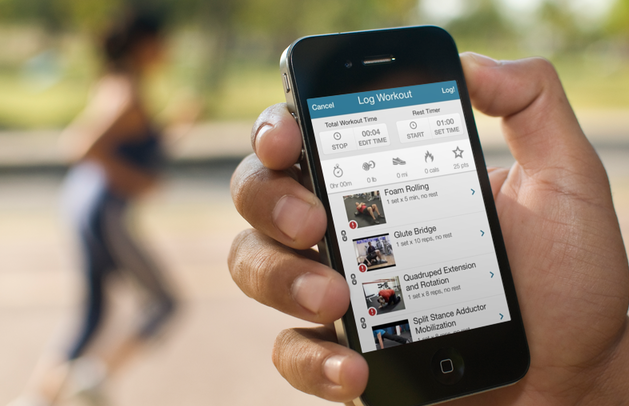
Want to create your own custom branded fitness apps? Get a demo now!
Most Profitable Fitness Apps
Fitness apps have become an increasingly popular way for people to track their workouts, monitor their progress, and connect with others who share their fitness goals. But just how profitable are these apps for the companies behind them? How much do fitness apps make from in-app subscriptions, memberships, advertising, and more? Let’s find out all about fitness app revenue statistics!
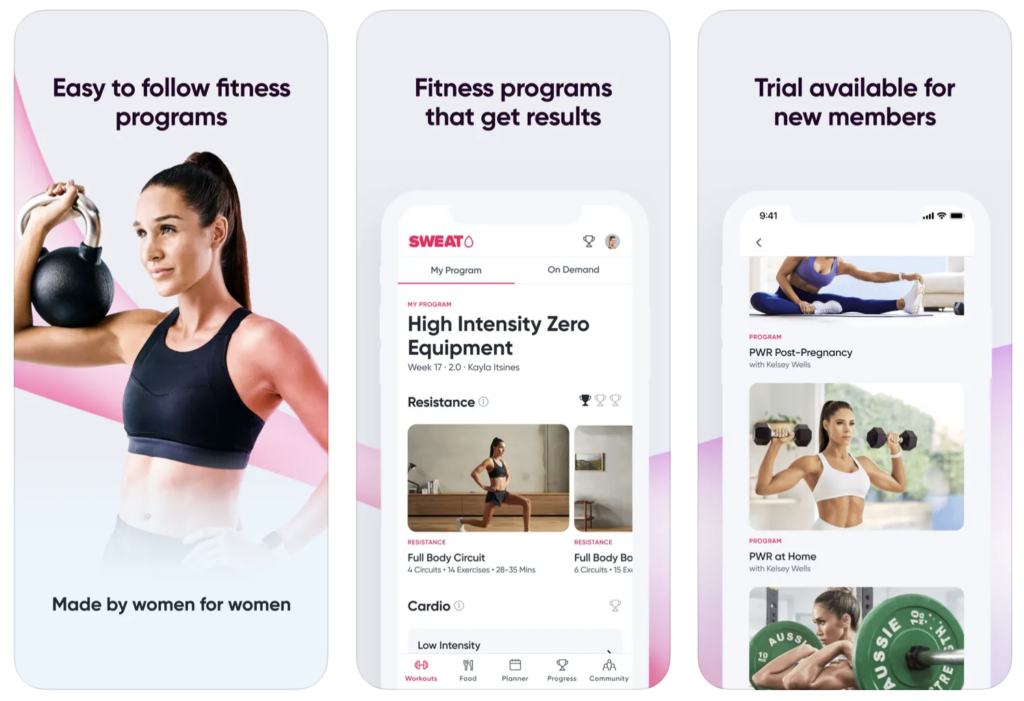
The following table is a list of the most profitable fitness apps, sorted from highest to lowest estimated earnings. It’s worth noting that these figures are estimates, and fitness app profitability can vary based on various factors like user engagement, business model, and market conditions. So, are fitness apps profitable? Exact profitability figures for fitness apps are typically not publicly disclosed, so the numbers provided here are estimates based on available data such as the number of users, the cost of subscriptions, and additional revenue sources. Here are 10 of the most profitable fitness apps, although actual profitability may vary:
| Name of the App | Owner Company | Estimated Number of Users | Estimated Earnings |
|---|---|---|---|
| 1. Fitbit | Fitbit Inc. | 27.6 million+ | $174 million+ |
| 2. Sweat | Kayla Itsines & Tobi Pearce | 30 million+ | $150 million+ |
| 3. 7 Minute Workout | Perigee | 30 million+ | $90 million+ |
| 4. Strava | Strava Inc. | 42 million+ | $85 million+ |
| 5. Nike Training Club | Nike, Inc. | 18 million+ | $54 million+ |
| 6. Peloton Digital | Peloton Interactive | 4.4 million+ | $52 million+ |
| 7. Runkeeper | ASICS | 15 million+ | $45 million+ |
| 8. Runtastic | Adidas | 14 million+ | $42 million+ |
| 9. MapMyRun | Under Armour | 10 million+ | $30 million+ |
| 10. Daily Burn | IAC | 3 million+ | $18 million+ |
What about you? Do you want to learn how to create a fitness app? Did you know there are many ways to learn how to make money with fitness?
Read More:
- Best Fitness App Builder Software
- How to Make a Fitness App
- How do I monetize my fitness app?
- Best Gym Mobile Apps Software
- How much does it cost to make a fitness app?
Most Profitable Fitness Apps by Fitness Influencers and Online Personal Trainers
Here’s a selection of the most profitable fitness influencer-led and personal trainer-led fitness apps, sorted from highest to lowest estimated earnings. These figures are also estimates, and the actual profitability of these apps can vary based on factors like user base, product pricing, and overall market conditions.
While the big players in the fitness app industry certainly command a lot of attention, there are numerous smaller, influencer-led and personal trainer-led apps that are gaining traction and turning profits. Fitness apps in high demand, and some of the best apps for personal trainers can help personal trainers make a fitness app with the best personal trainer app builder software. Here’s a selection showing that with the right strategy and tools (like those provided by Exercise.com), even smaller-scale fitness influencers and personal trainers can create profitable fitness apps.
| Name of the App | Leading Fitness Influencer/Trainer | Estimated Number of Users | Estimated Earnings |
|---|---|---|---|
| 1. Athli | Linn Lowes | 500k+ | $1 million+ |
| 2. Tone It Up | Karena Dawn and Katrina Scott | 400k+ | $800k+ |
| 3. StrongLifts 5×5 | Mehdi | 500k+ | $500k+ |
| 4. SHRED | Ian Lewington | 300k+ | $600k+ |
| 5. Fitbod | Allen Chen & Jesse Venticique | 250k+ | $500k+ |
| 6. Train with Lyzabeth | Lyzabeth Lopez | 200k+ | $400k+ |
| 7. Runtastic Results | Lunden Souza | 200k+ | $400k+ |
| 8. Centr | Chris Hemsworth | 100k+ | $200k+ |
| 9. BodyFit | Jamie Eason | 100k+ | $200k+ |
| 10. PiYo | Chalene Johnson | 100k+ | $200k+ |
Please note that these are only estimates based on available data, and the actual figures may vary. However, these examples showcase the potential for fitness influencers, gym owners, and personal trainers to create successful fitness apps using platforms like Exercise.com.

Get Your Own Fitness App
Exercise.com is a comprehensive platform with the best fitness software for influencers, the best personal training software, and the best gym management software so no matter what type of fitness business you have, it simplifies the process and amplifies your earning potential while also helping you run fitness challenges, create online workout groups, do fitness livestreaming, do in-person and online training, and more, all through your own custom-branded fitness apps. With its ability to create, market, and sell personalized workout plans to a vast audience, Exercise.com can help transform your fitness passion into a lucrative online fitness business.
Want to create your own custom branded fitness apps? Get a demo now!
Read More:
- Custom Branded Fitness Apps
- Best Fitness Mobile App Creation Software
- Best Fitness Influencer Apps
- Fitness App Name Ideas
How to Create Your Own Fitness Apps
Let’s get right to some practical ways that you can create your own fitness apps. With the Exercise.com platform you have a number of options to run a comprehensive online fitness experience for your community, all custom branded with your own fitness branding. You can sell workout plans, run fitness challenges, offer access (paid) to an online workout group, you can sell online training sessions, sell a membership to your own custom branded fitness app, offer mobile workout logging in your own workout apps, and much more. Here are some easy things you can do with the Exercise.com software platform.
Use the Exercise.com workout plan creator to create your workout plans.

Then mark them for sale online so you can sell workout plans easily and quickly.
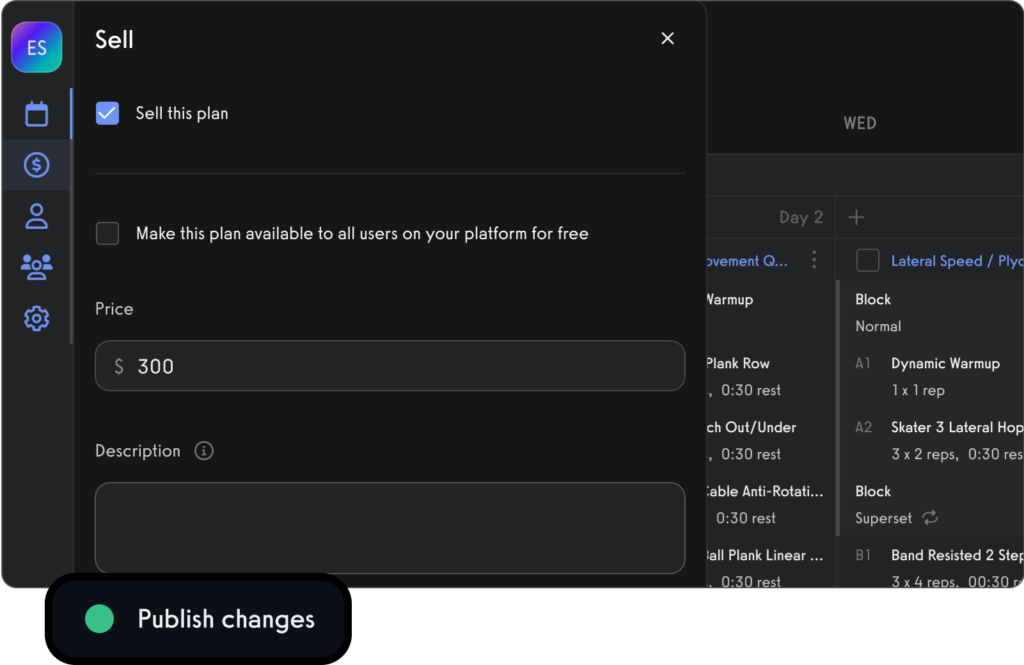
Publish your custom branded fitness apps so you can offer a premium workout logging experience to your community.

Your fitness followers will be able to search your name in the App Store and Google Play Store and then download your fitness app (no more instructing your followers to search for some other company’s name—start building your own fitness brand with your very own custom-branded fitness app!)
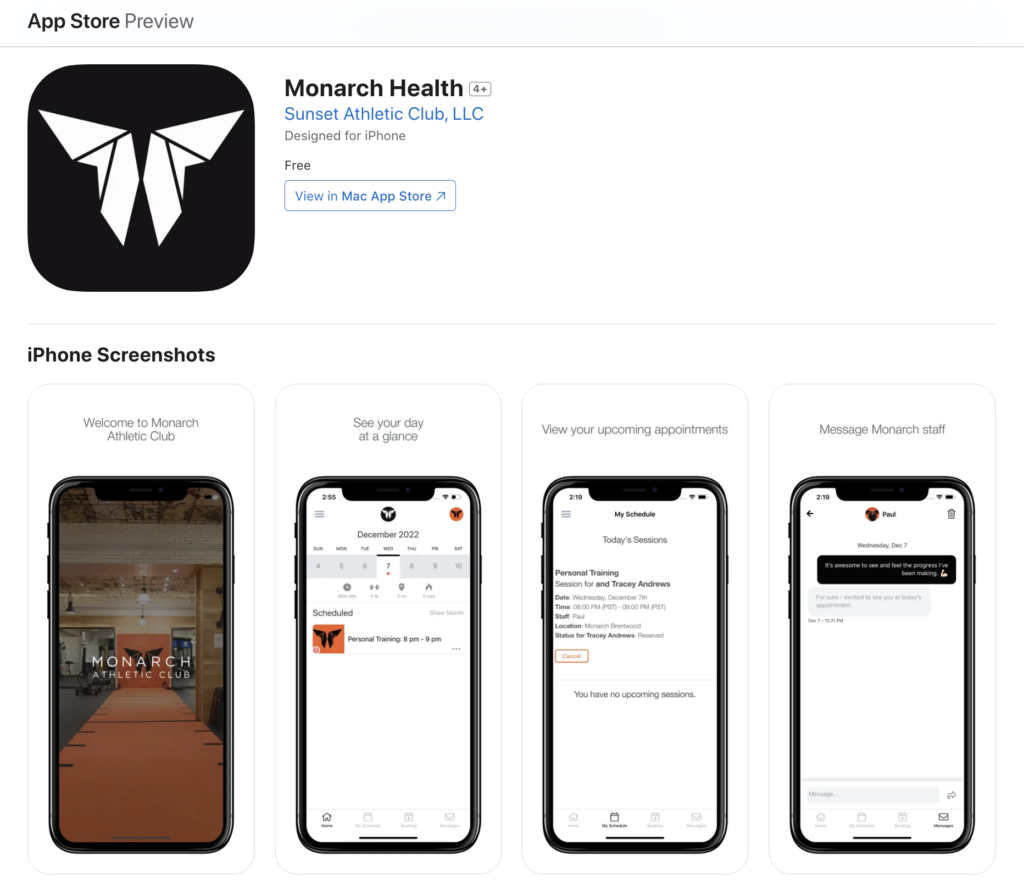
Your community can open up your fitness app and view their daily journal to log workouts, watch fitness videos, complete their daily habits, and more.
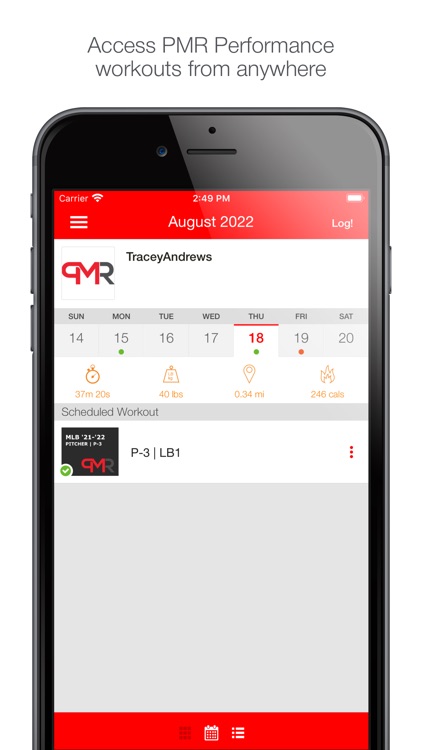
Create your own exercise demonstration videos or use the Exercise.com exercise video library to create a professional workout logging experience that your community will love and be happy to pay for (no more emailing around cobbled together PDF documents that people will just copy and share). Charge real money for a top notch fitness app that you will feel good about.
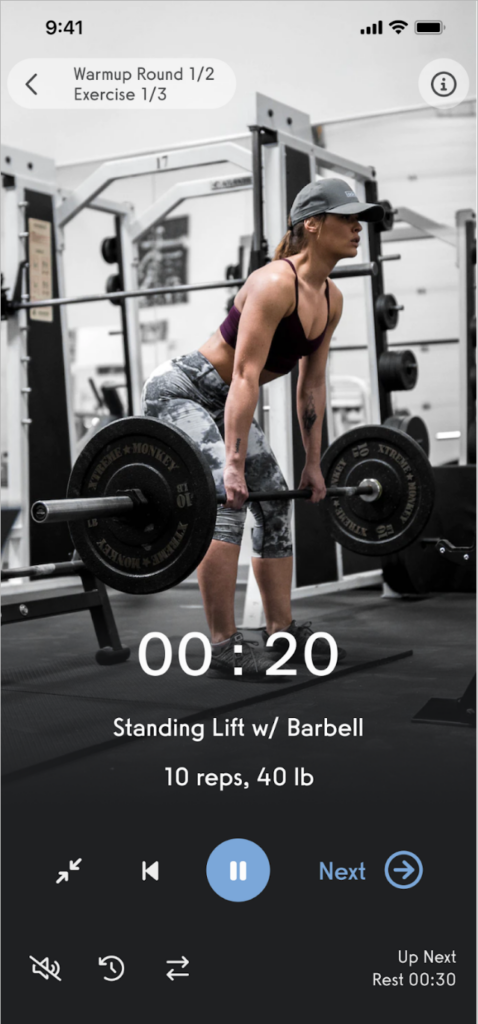
You can send messages to your community with email, SMS, and in-app messaging right inside of your own custom branded fitness apps, and you can even set up powerful fitness marketing automations to send messages automatically based on key triggers.
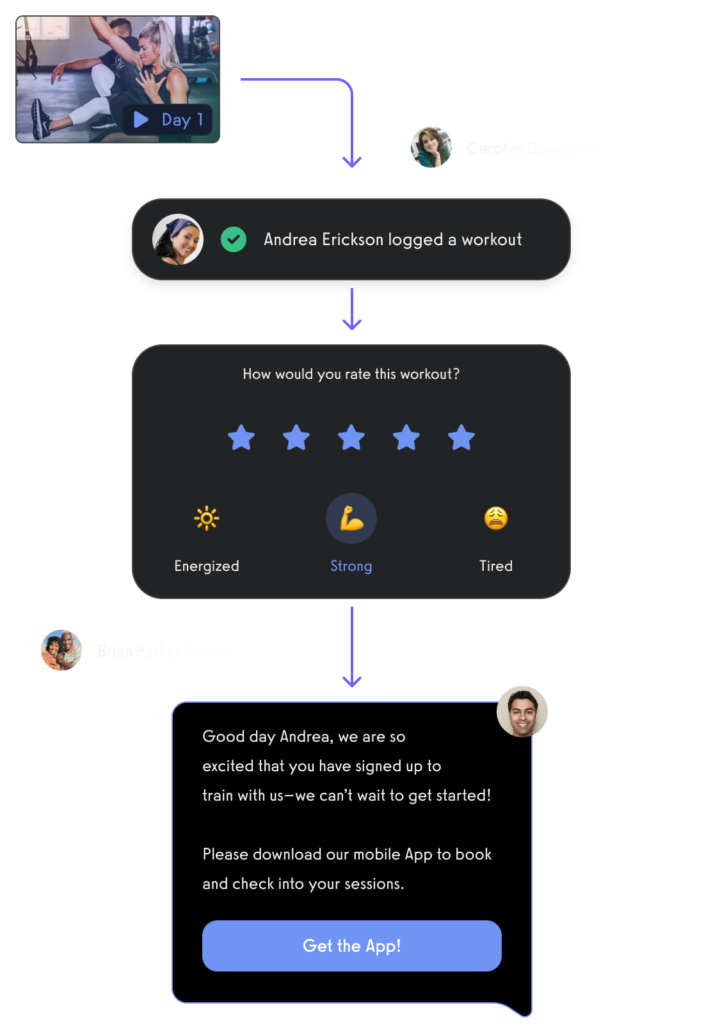
You can easily run your own virtual fitness challenges.
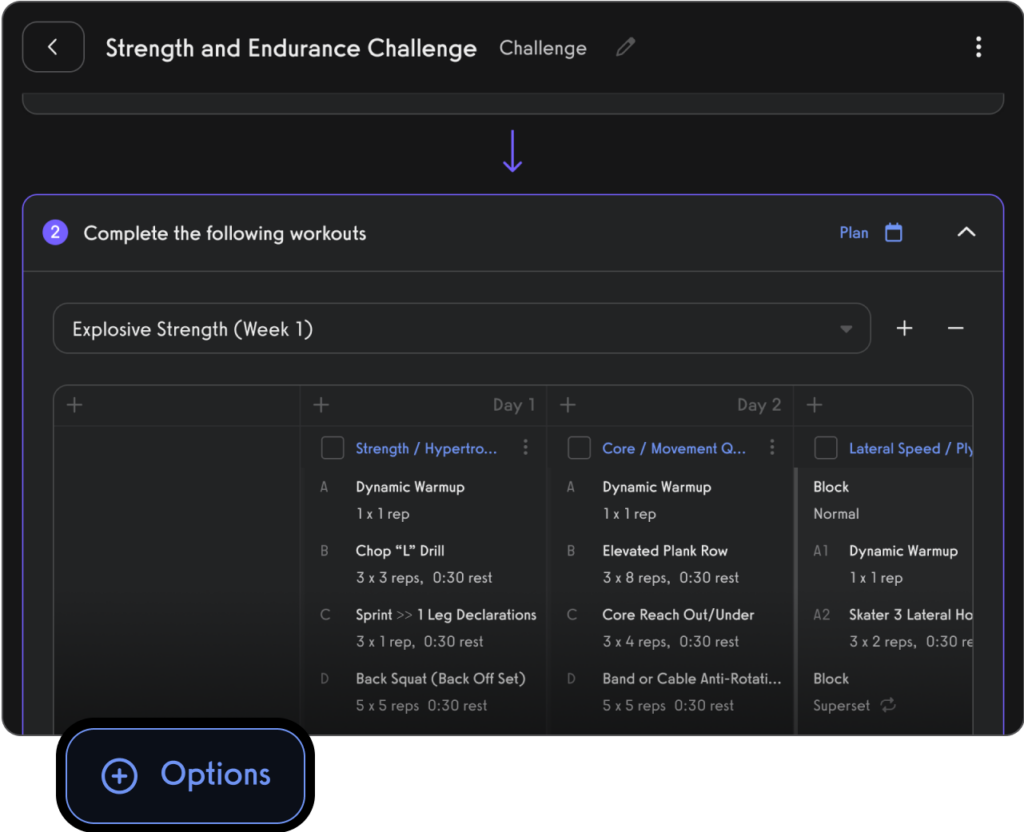
And create online workout groups, do distance training, sell workout plans online, time-release workouts in your apps, offer habit tracking, deliver nutrition guides, and much, much more, all right within your own fitness apps, and branded under your own fitness brand.


Exercise.com is the best fitness app builder software for fitness professionals who want a low cost and affordable custom branded fitness app. Exercise.com allows fitness professionals to have full control over their brand and learn how to make a fitness app quickly and easily, while ensuring a personalized and consistent experience for their clients.
Exercise.com is a comprehensive platform with the best fitness software for influencers, the best personal training software, and the best gym management software so no matter what type of fitness business you have, it simplifies the process and amplifies your earning potential while also helping you run fitness challenges, create online workout groups, do fitness livestreaming, do in-person and online training, and more, all through your own custom-branded fitness apps. With its ability to create, market, and sell personalized workout plans to a vast audience, Exercise.com can help transform your fitness passion into a lucrative online fitness business.
Ready to get started? Get a demo now!
Read More:
The rise of fitness apps in the digital age
In recent years, the fitness app market has exploded in popularity, driven in large part by the growing use of smartphones and other mobile devices. According to a recent report by Allied Market Research, the global fitness app market is expected to reach $15.96 billion by 2026, with a compound annual growth rate of 21.6% over the forecast period.
Factors contributing to the popularity of fitness apps
One of the main drivers of the fitness app market is the growing interest in health and wellness among consumers of all ages. As people become more health conscious, they are seeking new ways to monitor their physical activity and track their progress over time. The convenience of using a mobile app to do so is a major factor in their popularity, as they allow users to easily log their workouts, monitor their progress, and connect with others in their fitness community.
Key players in the fitness app market
Several major companies have emerged as key players in the fitness app market, including MyFitnessPal, Strava, and Peloton. These companies offer a range of features to users, from personalized workout recommendations to social networking and community building tools.
Read More:
- Best Fitness App Development Companies
- Fitness App Statistics
- Best Personal Trainer App Builder Software
- Best Personal Trainer Client Tracking Apps
Revenue models for fitness apps
With the rise of fitness apps, many people are wondering how these companies make money. There are several different revenue models in use today, each with its own advantages and disadvantages.
Subscription-based models
One popular approach is to offer premium subscription plans that provide users with additional features and benefits, such as personalized coaching and meal planning. Companies like Peloton and MyFitnessPal have found success with this model, as users are willing to pay a premium for access to exclusive content and services.
For example, Peloton offers a subscription service that gives users access to live and on-demand classes, personalized coaching, and a community of like-minded individuals. This subscription service starts at $12.99 per month and goes up to $39.99 per month for the all-access membership.
MyFitnessPal, on the other hand, offers a premium subscription service that provides users with personalized meal plans, advanced nutrition tracking, and exclusive content from health and wellness experts. This service costs $9.99 per month or $49.99 per year.
In-app purchases and advertising
Another way that fitness apps generate revenue is through in-app purchases and advertising. Companies can offer users the ability to purchase additional workouts, gear, or other products within the app itself, or they can sell advertising space to companies looking to reach a fitness-centric audience.
For example, Nike Training Club offers a variety of in-app purchases, including premium workout plans and gear. Users can also purchase individual workouts for as little as $0.99. Additionally, the app features sponsored content from Nike and other fitness brands.
Partnerships and sponsorships
Finally, some fitness apps generate revenue by partnering with other companies or organizations. For example, Strava has partnered with a number of major brands to offer discounts and other perks to its users, while MyFitnessPal has worked with health and wellness companies to promote their products and services.
Fitbit, another popular fitness app, has partnered with several major health insurance companies to offer discounts and rewards to users who meet certain fitness goals. This partnership not only helps users save money on their health insurance premiums but also encourages them to stay active and healthy.
Overall, there are many different revenue models that fitness apps can use to generate income. Whether through subscription services, in-app purchases, or partnerships, these companies are finding innovative ways to monetize their apps while providing users with valuable tools and resources to help them achieve their fitness goals.
Costs associated with developing and maintaining fitness apps
Of course, developing and maintaining a successful fitness app requires a significant investment of time and resources. There are several key costs that companies must account for when building and marketing their apps.
App development and design
The first and most obvious cost is the development and design of the app itself. This can range from a few thousand dollars for a simple app to hundreds of thousands or even millions of dollars for a more complex app with advanced features.
Marketing and user acquisition
In order to attract users and grow their user base, companies must also invest in marketing and user acquisition. This can include social media advertising, influencer partnerships, and other forms of promotion to generate buzz around the app.
Ongoing maintenance and updates
Finally, ongoing maintenance and updates are essential to ensure that the app remains functional and relevant over time. This can require a dedicated team of developers and designers, as well as ongoing investment in research and development to stay on top of emerging trends and technologies.
Profitability analysis of top fitness apps
Health and fitness apps have become increasingly popular in recent years, with more and more people turning to technology to help them achieve their fitness goals. These apps offer a range of features, from tracking workouts and calories to connecting with other users and participating in challenges.
So with all of these costs and revenue models in mind, just how profitable are the top fitness apps on the market today? Let’s take a closer look at some of the most successful apps to find out.
Case study: MyFitnessPal
MyFitnessPal is a popular fitness app that allows users to track their calories, workouts, and other health data. The app offers both free and premium subscription plans, as well as in-app advertising and partnerships with major health and wellness brands.
One of the reasons for MyFitnessPal’s success is its user-friendly interface and comprehensive tracking features. Users can easily log their meals and workouts, and the app provides helpful insights and recommendations based on their data.
According to a recent report by the app’s parent company, Under Armour, MyFitnessPal generated $157 million in revenue in 2019, up 24% from the previous year. The company cited strong growth in its premium subscription business and advertising partnerships as key drivers of its success.
Case study: Strava
Strava is another popular fitness app that allows users to track their running and cycling workouts, connect with friends and other athletes, and participate in challenges and competitions. The app offers both free and premium subscription plans, as well as in-app advertising and brand partnerships.
One of the unique features of Strava is its social component, which allows users to connect with other athletes and share their workouts and achievements. This has helped to create a strong sense of community among users, and has contributed to the app’s success.
According to a recent report by Apptopia, Strava generated $41.5 million in revenue in 2019, up 45% from the previous year. The company cited strong growth in its premium subscription business and partnerships with major sports equipment brands as key drivers of its success.
Case study: Peloton
Peloton is a fitness company that offers a range of connected workout equipment and digital content, including a popular fitness app that allows users to access live and on-demand workout classes from their mobile devices. The app offers a premium subscription plan that provides users with access to exclusive content and personalized coaching.
One of the reasons for Peloton’s success is its focus on providing a premium, high-quality experience for users. The company’s workout equipment is known for its sleek design and advanced features, while the app offers a range of classes and coaching options to help users achieve their fitness goals.
According to a recent report by Peloton, the company generated $1.8 billion in revenue in 2019, up 110% from the previous year. The company cited strong growth in its subscription business, as well as the launch of new products and services, as key drivers of its success.
Overall, these case studies demonstrate the potential for profitability in the fitness app market. By offering a range of subscription plans, in-app advertising, and brand partnerships, these apps have been able to generate significant revenue while providing valuable tools and resources for users.

How much money does a fitness app make?
The revenue generated by a fitness app can greatly vary depending on factors such as user base, monetization strategy (ads, subscriptions, in-app purchases), and user engagement. On average, fitness apps can earn from a few thousand dollars to millions annually. Some top fitness apps like Fitbit and Sweat generate estimated earnings in the range of $150 million to $174 million.
How do fitness apps make money?
Fitness apps make money by offering subscription-based services where users pay a regular fee for access to premium content or features, and through one-time purchases where users can buy individual workout plans or fitness classes. Some apps also incorporate e-commerce platforms to sell physical products like workout gear or supplements directly through the app.
Additionally, in-app advertising allows businesses to display their ads, providing another revenue stream. Sponsored challenges and partnerships with other brands for joint marketing efforts are also common. Fitness apps may also sell personalized nutrition plans and engage in affiliate marketing, where they recommend products and earn a commission on sales made through the app. Virtual coaching services and premium subscription tiers with added perks are other popular methods.
The app may host masterclasses on specific fitness topics, sell diet and meal prep guides, and offer certification programs. Access to exclusive online communities, paid fitness events, and the option to accept user donations are also utilized. Some apps monetize anonymized user data for market research, sell tickets for webinars, publish health and fitness eBooks, rent ad space, sell workout equipment, and license their fitness content to other platforms or business
Fitness apps, including those created with platforms like Exercise.com, have various fitness app monetization strategies to generate revenue. These strategies include:
- Subscription-based models: Offering premium features or content for a fee, providing a steady revenue stream and building a loyal user base.
- In-app purchases: Allowing users to buy additional features, training plans, or products directly within the app, which can include workout gear, nutritional supplements, or branded apparel.
- Advertising and sponsored content: Partnering with companies to display ads or sponsored content within the app, often related to fitness, wellness, or nutrition.
- Affiliate marketing and partnerships: Earning commissions by promoting other products or services within the app, such as partnering with fitness equipment manufacturers or health food brands.
- Selling workout plans and personal training packages: Providing detailed workout plans or personal training sessions that users can purchase.
- E-commerce: Some fitness apps include a shop where users can purchase related products like fitness gear, supplements, or branded merchandise.
- Premium subscriptions: Offering an enhanced version of the app with additional features, content, or personalization options for a higher subscription fee.
- Online coaching and fitness challenges: Charging for personalized coaching services or for entry into fitness challenges that motivate users to achieve their goals.
- Content licensing: Licensing the app’s content to other businesses or platforms, which can provide another revenue stream.
- Data monetization: With user consent, some apps may collect and sell anonymized data for market research purposes.
These fitness app monetization methods can be tailored and combined based on the app’s target audience, the value of the content or services offered, and the overall business strategy. Platforms like Exercise.com provide the tools and infrastructure to implement these strategies effectively within a custom-branded fitness app, helping fitness professionals and businesses to monetize their offerings and scale their operations.
Read More: How do fitness and workout apps make money?
How much does it cost to start a fitness app?
The cost to develop a fitness app can range from $10,000 to $500,000 or more, depending on the complexity of the app, the number of features, the platform (iOS, Android), and whether you’re doing it yourself or hiring a professional developer. However, using Exercise.com can drastically reduce these costs as they provide a comprehensive platform for developing customized fitness apps at a fraction of the cost.
Read More: How much does it cost to make a fitness app?
How do I start my own workout app?
Starting your own workout app involves several steps:
- Identifying your target audience and their needs.
- Deciding the type of fitness app (personal trainer, workout planner, diet tracker, etc.)
- Sketching out the features and design of the app.
- Building the app or hiring a developer to do so.
- Testing the app for bugs and usability.
- Launching the app on the relevant platforms (Google Play, App Store).
- Marketing the app to your target audience.
Exercise.com can simplify this process with their all-in-one fitness business software, allowing you to create a customized workout app without the need for coding or technical expertise.
Read More: Can I make my own fitness app?
What makes a fitness app successful?
Key factors that contribute to the success of a fitness app include a user-friendly interface, personalization, integration with other apps and devices, social features for sharing and competing with friends, and providing real value to the user in terms of achieving their fitness goals. Successful fitness apps also tend to have regular updates with new features and improvements to keep users engaged.
Read More: What makes a fitness app successful?
What are the best apps for online fitness coaches?
The best apps for online fitness coaches often include features like workout customization, client tracking, and communication tools. Apps like Trainerize and My PT Hub are popular, but for those looking to build a fitness app tailored to their unique coaching style, working with the best fitness app developers like Exercise.com can be a game-changer. Exercise.com offers comprehensive solutions to develop a fitness app that meets all your business needs, setting it apart as an ideal platform for online fitness coaches.
Read More: Best Apps for Online Fitness Coaches
How much is MyFitnessPal revenue? (estimated)
MyFitnessPal’s revenue is not publicly disclosed in detail, but estimates suggest it generates tens of millions annually. The app’s income primarily comes from premium subscriptions and advertising. As a leading app in the health and fitness category, MyFitnessPal’s revenue serves as a benchmark for those looking to build a fitness app and explore effective monetization strategies.
How much is Leap Fitness Group revenue? (estimated)
Leap Fitness Group, known for its suite of fitness apps, doesn’t publicly share its revenue figures. However, it’s estimated that their revenue could be in the range of tens of millions annually, given their apps’ popularity and download rates. For developers and businesses aiming to create a fitness app, understanding the potential revenue from successful apps like those developed by Leap Fitness Group can be insightful.
How much is FitBod revenue? (estimated)
FitBod’s revenue is also not publicly disclosed, but with its strong user base and premium subscription model, it’s estimated to generate millions annually. This estimate can offer a perspective for those developing a fitness app and considering subscription-based models for fitness app business ventures.
How much is iFit revenue? (estimated)
iFit’s revenue is estimated to be well into the hundreds of millions annually, bolstered by its comprehensive platform that includes interactive personal training and workouts. This figure underscores the potential in building a fitness app that offers unique, high-quality content and user engagement.
How much is Strong App revenue? (estimated)
The Strong App, popular among weightlifters and fitness enthusiasts, likely generates revenue in the millions, considering its subscription services and in-app purchases. This app’s success story can inspire those looking to build your own workout app and tap into niche fitness markets.
How much is Sweat App revenue? (estimated)
Sweat App, co-founded by fitness influencer Kayla Itsines, is estimated to generate substantial revenue, potentially in the tens of millions annually, through its subscription model. This app’s success highlights the impact of influencer partnerships and community building for those developing a fitness app.
How much does custom fitness app development cost?
The cost of custom fitness app development can vary widely, from $10,000 for a basic app to over $100,000 for a feature-rich, custom-built app. Factors affecting cost include app complexity, design specifics, and the chosen platform’s functionality. Exercise.com, recognized as one of the best fitness app developers, offers tailored solutions that balance quality and cost-effectiveness, making it an excellent choice for building a fitness app.
What is the best fitness app business model?
The best fitness app business model often combines subscription services, in-app purchases, and premium features. Providing valuable free content to attract users and then offering advanced features through subscriptions can be particularly effective. Collaborating with a platform like Exercise.com, known for helping clients successfully create their own fitness app, can ensure your app is designed with a sustainable and profitable business model in mind.
How do I start a fitness app business?
Starting a fitness app business involves not just developing the app, but also planning your business model, conducting market research, creating a marketing strategy, and setting up customer support. Using a platform like Exercise.com can simplify many of these steps, helping you to easily create your app, handle payments and subscriptions, integrate with other tools, and provide a seamless user experience.
Why should I use Exercise.com to create a fitness app?
Exercise.com provides a comprehensive platform for fitness professionals to create a customized fitness app without needing to code or hire a developer. They handle all the technical aspects, allowing you to focus on your content and your users. Additionally, their platform supports e-commerce capabilities, workout creation and delivery, performance health assessments, and client and class scheduling, making it a powerful tool for growing your fitness business. They also provide marketing tools and analytics to help you expand your user base and improve engagement.

Create a Profitable Fitness App
Overall, it’s clear that fitness apps can be very profitable for the companies behind them. By leveraging innovative revenue models, investing in development and marketing, and offering compelling features and content to users, companies like MyFitnessPal, Strava, and Peloton have found success in this booming market. As the fitness industry continues to evolve, it will be exciting to see what new trends and technologies emerge in the world of fitness apps.
See why Exercise.com is the best choice for fitness influencers, personal trainers, gym owners, and fitness professionals who want to create fitness apps and grow their fitness business online and in-person. Are you ready to create your own custom-branded fitness apps?
Read More:









